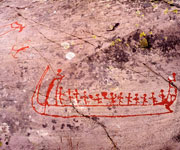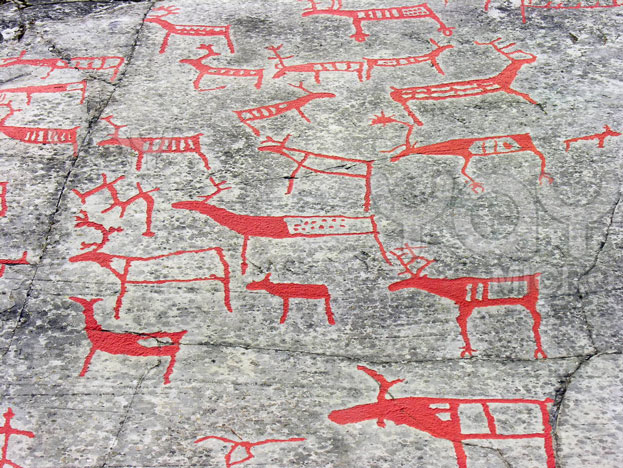The Rock Drawings of Alta constitute the most important piece of evidence in favour of the existence of human activity in the confines of the Great North during the prehistoric period. Studied from 1967, the petroglyphs of the Alta fjord in the province of Tromsø were immediately classed among the leading rock art sites in the world. Close to the Arctic Circle, they are a valuable illustration of human activity between 4200 and 500 BC in the Northern Hemisphere. The position of the paintings and engravings with respect to sea level at different postglacial periods constitutes a relative dating element, which is corroborated by objective iconography data.

Continent: Europe
Country: Norway
Category: Cultural
Criterion: (III)
Date of Inscription: 1985
Ancient Rock art of Alta
According to the principle of reverse stratigraphy, the most ancient works are generally the highest, the most recent being close to the present sea level (the height difference is roughly 26 m). They are primordial evidence of the fauna, representing reindeer, elks, bears, dogs and/or wolves, foxes, hares, geese, ducks, swans, cormorants, halibut, salmon and whales, and of the environment. They also depict boating, hunting, trapping and fishing scenes, as well as people taking part in dances and ritual acts. In the final phase, some agricultural activities, rendered precarious by the climate, appear to have supplemented certain staples traditionally provided by hunting and fishing.The thousands of paintings and engravings located at 45 sites scattered over seven localities illustrate a chronological sequence consisting of four phases. The largest area is at Hjemmeluft/Jiepmaluokta, where Alta Museum is situated. Approximately 3,000 figures have been found here. This is the only area open to the public. In addition, there is an area with rock paintings. Some of the panels at Hjemmeluft/Jiepmaluokta are linked by wooden footways.
 |
| Ancient Rock art of Alta |
Browse Gallery Plus UNESCO Storyline
Hunters and fishers in the late Stone Age/early Metal Age, between 6,200 and 2,000 years ago, made the rock carvings in Alta. During this period, Hjemmeluft/Jiepmaluokta was where people from the coast and inland regions, who gathered here several times a year perhaps in connection with seasonal, nomadic journeys, performed ritual ceremonies. The rock carvings depict some of the beliefs held by these people and the rites they practised. The rock carvings were probably elements in myths and stories about the worlds inhabited by the people and the spirits.
The rock carvings at Hjemmeluft/Jiepmaluokta were hewn into the massive and hard sandstone using one stone as a chisel and another stone or an antler as a hammer. The outlines of the figures were pecked out first, and then the lines and surfaces were chiselled out. Today many of the figures are difficult to see, and, therefore, some of the figures along the wooden footway are painted with a red colour resembling the colour of the rock paintings in Scandinavia. However, the majority of the rock carvings in Alta are not painted.
The museum exhibition covers the period from the pioneer settlement 11,000 years ago to the birth of Christ. It gives a thematic introduction to Finnmark's prehistory, which has been studied by researchers ever since the geologist and archaeologist Anders Nummedal discovered the earliest settlements in this part of Norway in 1925. This pioneer settlement in the early Stone Age was previously known as the Komsa Culture, named after the little mountain in Alta where Nummedal made his first finds. Throughout the Stone Age and early Metal Age, hunting and fishing people lived off the ample resources in the area. The first immigrants settled on the coast, but people gradually also occupied the interior. In the large rock art areas in Alta, groups from coast and inland met to practise religious rites and beliefs.
The rock carvings in Alta indicate that this was a religious meeting-place in the late Stone Age (4200-1800 BC) and early Metal Age (1800 BC). Various types of bear-hunting scenes are common among the oldest rock carvings, suggesting that the bear may have been viewed in a similar way 5,000-6,000 years ago as it was in the pre-Christian Sámi religion. The Sámi gods are presented as they are depicted on the Runebommen (magic drum). The exhibition also shows how, in the Sámi religion, nature was regarded as possessing a soul and being alive.
Browse All UNESCO World Heritage Sites in
Norway. The original UNESCO inscription
Here!!!












0 comments:
Post a Comment